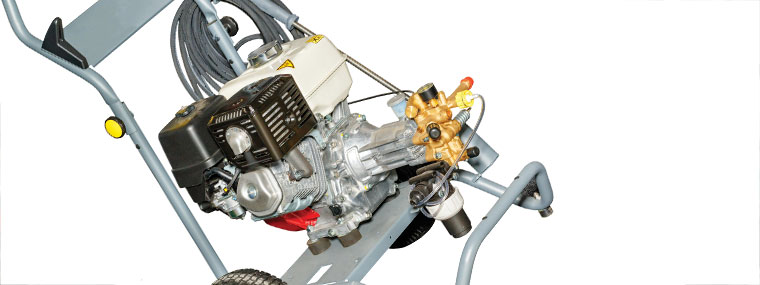
Small Off-Road Engines (SORE)—The Basics
By Diane M. Calabrese / Published December 2021

For two decades the Environmental Protection Agency (EPA) has been incrementally adding regulations to non-road spark ignition engines that operate at or below 19 kilowatts. Now, as it often does, California has leaped ahead of the EPA.
The California Air Resources Board (CARB) aims to achieve 100 percent zero-emissions from small off-road engine (SORE) entities by 2035. The executive order putting the Golden State’s goal in play adds “where feasible” and considers disparate impact on certain disadvantaged communities.
[N.B. As our technical readers know 19 kilowatts is the equivalent of 25.5 horsepower. Be aware though that EPA and CARB both use “25 horse-power or less” in their descriptions of regulations, perhaps for simplicity. And although the 2035 date seems distant, implications for our industry are quite near as manufacturers are working with CARB to set emission standards (smog-forming pollutants to zero) for newly manufactured engines—except portable generators—as early as January 1, 2024.]
According to CARB, 61 percent of SORE in the state of California are used in residential and garden equipment. Pressure washers and generators fall into a group that accounts for 20 percent of SORE use.
Will achieving zero emissions from such small engines improve air quality significantly? A fact sheet from CARB gives two comparisons to demonstrate the effect it will have. They follow.
One, using a lawn mower for one hour emits as many pollutants as driving a new light-duty passenger car 300 miles. Two, using a leaf blower for one hour emits as many pollutants as driving the same vehicle 1100 miles.
CARB initially introduced standards for SORE in 1990. It was the first entity in the world to target the emissions from the small, off-road engines.
How will SORE affect the manufacture, distribution, and use of pressure washers? For some answers, we turn to Jimmy Welch, the chair of the CETA Technical and Standards Committee and a member of the team at American Pressure Inc. in Robbinsdale, MN. Engagement with regulators is a must, and it must be ongoing. That’s where Welch begins.
“Since the regulators determine ‘feasible,’ we must continue working with them on when cost-effective technology will be ready,” explains Welch. “The residential market has electric-powered and alternative cordless battery-powered cold-water pressure washers already in the market, but there is a big cost difference.” The difference is about five to one, explains Welch. There’s a cordless with a battery for $500 and an electric with a cord for $100.
There are significant differences in the longevity built into commercial versus residential pressure washers. Welch issues the reminder that when working with regulators, manufacturers will have to be certain that cases from across the spectrum of design (and uses) are used when tailoring expectations for emissions reduction.
Welch notes with CARB regulations there has been some flexibility. He points, for example, to generators on emergency response equipment that were granted an extension for compliance with zero emissions because of the importance of the emergency response. “When the battery is dead and there’s no power on, you have nothing.”
The flexibility from CARB may signal more latitude is possible in other instances, such as in the realm of pressure washers, and Welch believes pressure washers should be considered for an extension.
An estimated 50,000 small businesses will be affected by SORE in California. The state budgeted $30 million in rebates to encourage people to switch to emissions-compliant equipment.
Welch is philosophical about SORE. “Change can be painful but is inevitable,” he says. “Our members from other states will eventually see the same regulations and must adapt.”
Given the need to accept the change and be ready for it across the nation, Welch comments on some of the direct and hidden costs to our industry. “Our California distributors will have to add zero-emission products once available and train their sales and service teams on the new technology,” he explains. That could increase prices of machines.
As a corollary, contract cleaners buying the equipment will likely incur a higher cost. If so, they also will have to increase prices for cleaning contracts.
Pressure washers with small engines in the SORE category are essential to cleaning—as portable, truck and trailer mounted, and commercial models—says Welch. As such, they must be reconfigured to meet the CARB expectations.
Welch emphasizes that CETA members already are at work designing and introducing products that meet requirements of zero-emission. He cites a zero-emission lithium-ion battery (three-phase brushless motor) developed by Honda as one illustration.
It can all be done—cleaning coupled with zero-emissions from engines—but product costs will almost definitely be higher, says Welch. Moreover, doing it all will require attention to battery life.
“Commercial pressure washers operate for extended periods of time–six to eight hours a day—and the majority clean at night,” says Welch. “The battery life as well as the charging system must be able to last in this application.”
And yet, as Welch reminds us, only electric or cordless battery engines can achieve zero emissions. Ignited internal combustion engines cannot.
Of course, it will be about more than internal combustion of gas versus electric (in some form) in the future. Research and development teams across the world have keen interest in alternatives such as hydrogen internal combustion engines (H2-ICE) and more.
Finally, Welch says it’s not just members of the industry who must be fully engaged with regulators to change and design toward achievement of the SORE zero-emission goal. “California must improve their electrical power grid so it can keep up with the additional battery charging demands.”
[Keep up to date with SORE and how it affects CETA members via the webpage devoted to the topic at the CETA website: https://ceta.org/news/sore-2021.]





